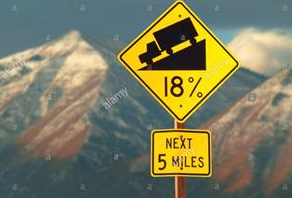Addition or Subtraction rule
Multiplication or Division rule
Exponential
It is valid. No rules are violated.
question id: dim-1
\[ \newcommand{\dnorm}{\text{dnorm}} \newcommand{\pnorm}{\text{pnorm}} \newcommand{\recip}{\text{recip}} \]
Exercise 1 For each mathematical operation, identify the operation as valid or invalid according to the rules of dimensional arithmetic.
Addition or Subtraction rule
Multiplication or Division rule
Exponential
It is valid. No rules are violated.
question id: dim-1
Addition or Subtraction rule
Multiplication or Division rule
Exponential
It is valid. No rules are violated.
question id: dim-2
Addition or Subtraction rule
Multiplication or Division rule
Exponential [correct hint: Nice. The exponent is 4 ft / 3 g, which has dimension L / M. Exponents must always have dimension
It is valid. No rules are violated.
question id: dim3
Addition or Subtraction rule
Multiplication or Division rule
Exponential
It is valid. No rules are violated.
question id: dim-4
Addition or Subtraction rule
Multiplication or Division rule
Exponential
It is valid. No rules are violated.
question id: dim-5
Addition or Subtraction rule
Multiplication or Division rule
Exponential
It is valid. No rules are violated.
question id: dim-6
Exercise 2 Consider the road descent summarized by this sign …

The “grade” of road is defined as rise-over-run. Since both rise and run have dimension \(L\), the ratio is dimensionless. The grade in percent is 100 times rise-over-run. A 100% grade corresponds to a \(45^\circ\) angle.
0.91 miles
4752 feet
1.5 km
292 rods
7.36 furlongs
22.64 \(\sqrt{\text{acre}}\)
question id: rooster-blue-1
Since a vehicle’s odometer measures distance along the road surface rather than along the horizontal “run,” it is likely that the sign-makers had in mind 5 miles being the length of the hypotenuse of the triangle rather than the horizontal leg.
question id: rooster-blue-2
0.85 miles
1.40 km
283.5 rods
6.8 furlongs
22.01 \(\sqrt{\text{acre}}\)
question id: rooster-blue-3
Exercise 3 Newton’s law of universal gravitation—also known as the inverse square law—is generally written
\[F = G \frac{m_1\ m_2}{r^2} .\] \(m_1\) and \(m_2\) are the masses of the two objects (say, Earth and Sun). \(r\) is the distance between the two objects (about 150,000,000 km). \(F\) is the gravitational force and \(G\) is a fixed quantity called the “gravitational constant.”
Recall that the dimension of force is \(M\, L\, T^{-2}\).
What is the dimension of the gravitational constant, \(G\)?
\(L^3\ M^{-1}\ T^{-2}\)
\(L^2\ M^{-2}\)
\(L^2\ M^{2}\ T^{-2}\)
\(L^2\ M^{-2}\ T^{-2}\)
question id: slc-7-1
The quantity \(G\) is \(6.674 \times 10^{−11}\) when \(L\) is in meters, \(M\) is in kilograms, and \(T\) in seconds. What is the gravitational force between Earth (mass \(6 \times 10^{24}\) kg) and Sun (mass \(2\times 10^{30}\) kg) ?
\(3.6 \times 10^{28}\) Newtons
\(3.6 \times 10^{31}\) meters
\(3.6 \times 10^{28}\) meters per second-squared
\(3.6 \times 10^{31}\) meter seconds per kg
question id: slc-7-2
Exercise 4 A simple model of the distance travelled by a tennis ball after launch from a slingshot is \[\text{hdist}(v_0, \theta) = 2 v_0^2 \cos(\theta)\sin(\theta) / g\] where \(\theta\) is the launch angle, measured from the horizontal, \(v_0\) is the initial velocity, and \(g\) is the acceleration due to gravity.
question id: child-iron-laundry-1
question id: child-iron-laundry-2
question id: child-iron-laundry-3
question id: child-iron-laundry-4
question id: child-iron-laundry-5
question id: child-iron-laundry-6
Exercise 5 The “Energy-maneuverability Theory” (E-M) of aircraft performance was developed by renowned fighter pilot Col John Boyd and mathematician Thomas Christie in the 1960s. The theory posits that the available maneuverability of an aircraft is closely related to its specific energy \(E_s\), that is, the kinetic plus potential energy of the aircraft divided by aircraft weight. To be highly maneuverable, an aircraft must be able to change it is specific energy rapidly in time. Let’s call this ability the specific power (that is, power divided by mass), \(P_s\). An aircraft with large \(P_s\) is more maneuverable than one with small \(P_s\).
An important formula in E-M Theory is \[P_s = \frac{T - D}{W} V\] where \(T\) is aircraft thrust, \(D\) is drag, \(W\) is weight, and \(V\) is velocity. \((T-D)\). Thrust minus drag, is the net forward force on the aircraft.
Recall these facts about the dimension of physical quantities:
[Force][Velocity]
[Energy][Velocity]
[Force] / [Velocity]
[Energy] / [Velocity]
question id: boyd-1
[Power] \(\times\ M^{-1}\)
[Force] \(\times\) [Acceleration]
[Force] \(\times\) [Velocity]
[Power]
question id: boyd-2